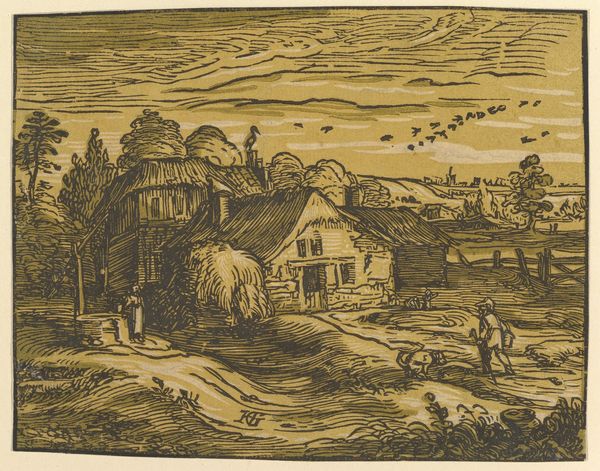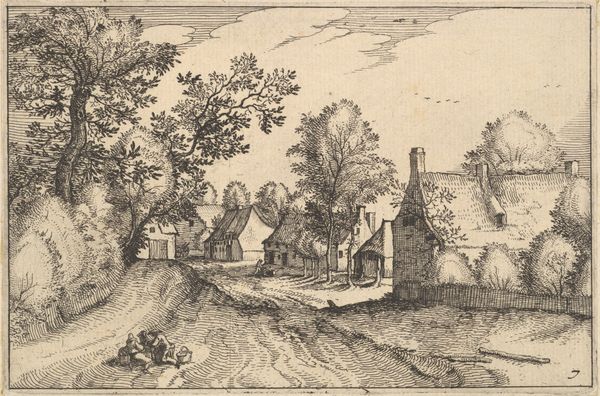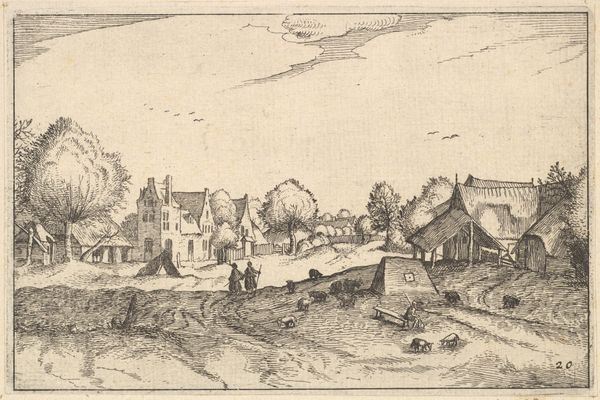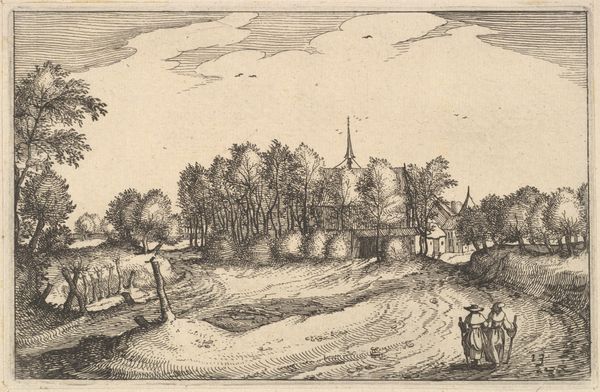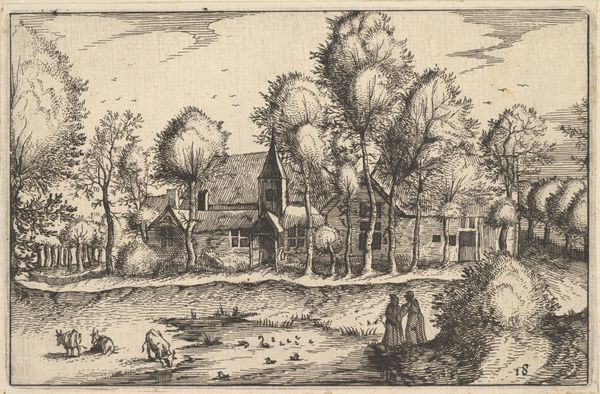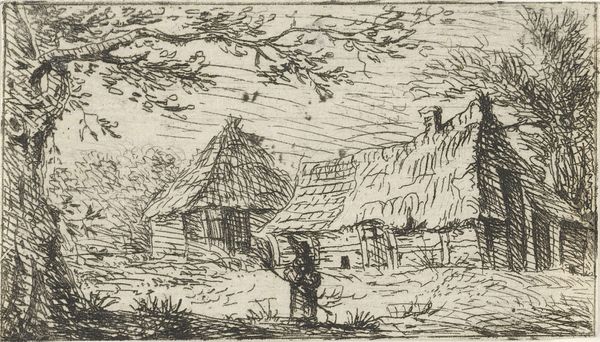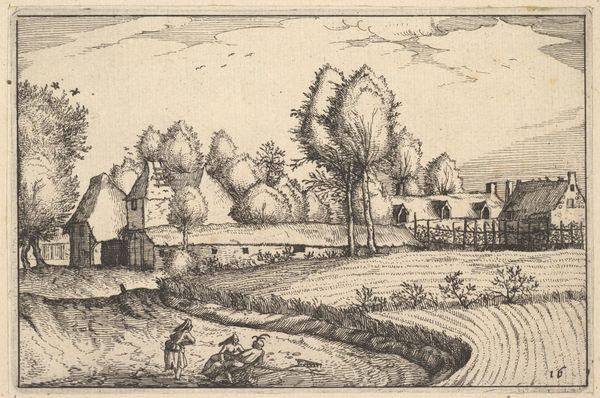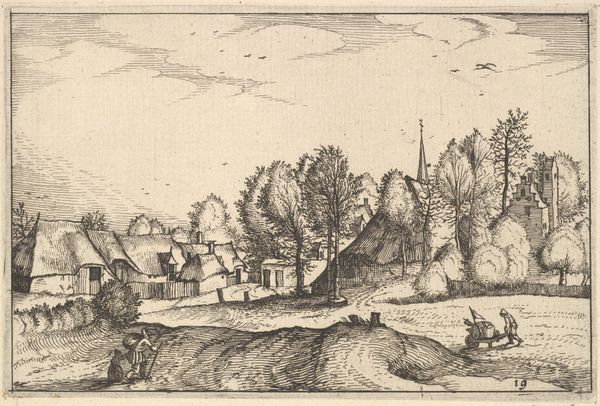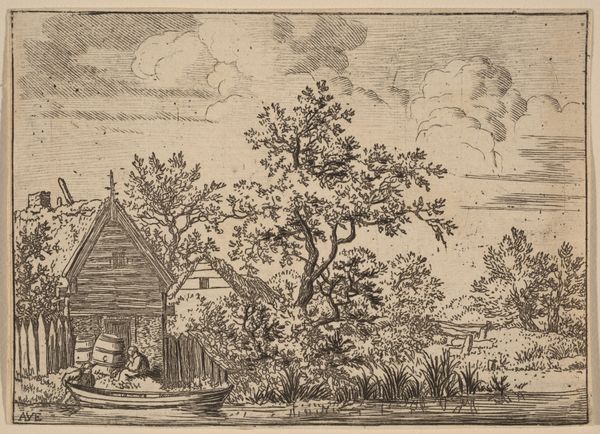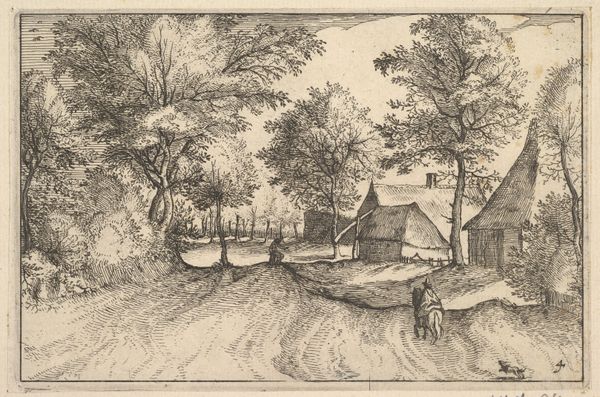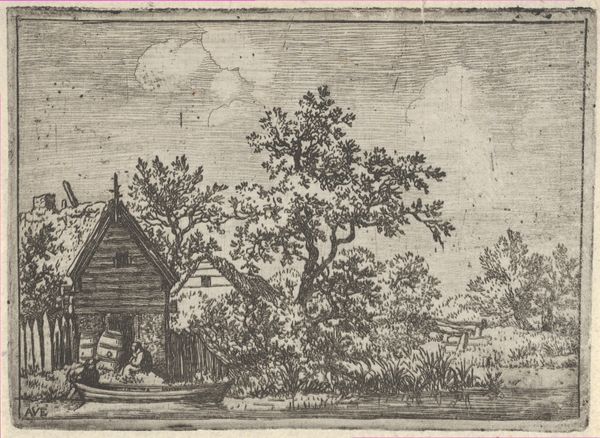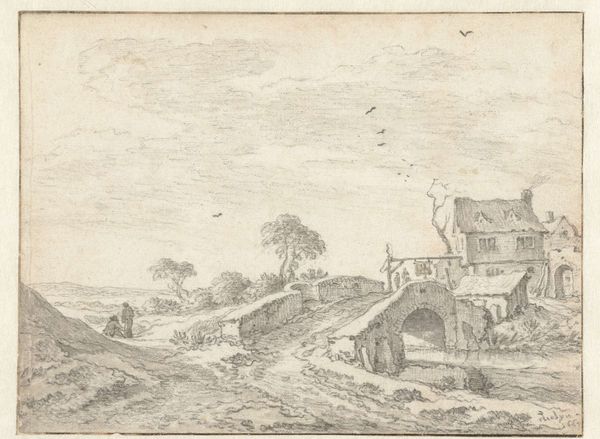
Landscape with a Farmhouse, from Four Small Landscapes 1597 - 1600
0:00
0:00
drawing, print, paper, woodcut
#
drawing
# print
#
landscape
#
paper
#
woodcut
#
genre-painting
#
northern-renaissance
Dimensions: 113 × 144 mm (image); 123 × 155 mm (plate/sheet)
Copyright: Public Domain
Curator: Immediately striking, isn't it? Editor: It has a strange, almost haunting, simplicity. A starkness achieved through its limited palette and direct, economical lines. Curator: Precisely. We're looking at "Landscape with a Farmhouse, from Four Small Landscapes," a woodcut created by Hendrick Goltzius between 1597 and 1600. Look closely at the medium. Editor: The density of the cross-hatching, the way light is suggested only through its absence…it creates an atmospheric perspective, doesn't it? That horizon line punctuated by what seems to be a distant village spire is masterfully subtle. Curator: Yes, but let's also consider the process. Each mark a deliberate cut into the woodblock, requiring intense labor and a specific skill set, highlighting a particular workshop environment for the production of reproducible images during that period. Editor: Absolutely, and I agree. However, the formal arrangements here are remarkable: The thatched roofs mimic the undulating landscape, mirroring nature itself. The foreground figure is juxtaposed against the architecture drawing the eye through the piece, revealing depth. Curator: And consider that foreground figure further. Is he merely a compositional element, or does he represent the laboring class? The piece encourages viewers to ponder on the material conditions of rural life. The presence of the figures, the home...these all represent a rural social fabric in a way that elevated forms of painting often ignored. Editor: Indeed, the texture throughout—rough hewn timber versus that cloud-swept sky—adds compelling tensions. Goltzius' grasp of contrasts, light, darkness… Curator: Well, seeing through both our perspectives, it's been fascinating examining Goltzius' work from both production and visual perspectives. Editor: Agreed. I was too drawn in with the form but you’re correct in bringing our focus to a fuller social, working context too.
Comments
No comments
Be the first to comment and join the conversation on the ultimate creative platform.
